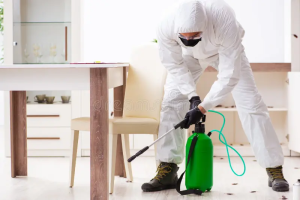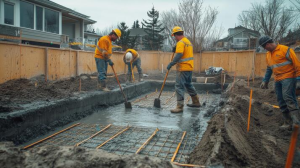If your cabinet structure is in good condition and you want a modern look, consider refacing. This is a complex project that requires professional skills like veneering.
Unlike refinishing, Phoenix Cabinet Refacing gives you an updated look that will hold up to years of holiday feasts and weekday chaos. Plus, it’s an eco-conscious alternative to replacing your cabinets.
Cost

Cabinet refacing costs less than replacement, which is why it’s such a popular choice for homeowners who want to update their cabinets without spending a fortune. However, the exact price you pay will depend on your project details and geographic location. For example, labor rates are higher in some areas than others, and the cost of materials can also vary.
The average cabinet refacing costs around $100 to $250 per linear foot, which includes the cost of materials and labor. The total cost of your refacing project will be affected by the complexity of your design, the materials you choose (including real wood veneers or laminate), and the additional hardware or other features you add.
Before you start refacing your cabinets, it’s important to clean the surface to make sure it’s free of any dirt, oils, or other residue that might prevent proper adhesion. This is especially true for surfaces that are exposed to moisture, like your kitchen countertops.
Once the surface has been cleaned, you’ll need to remove your doors and drawer fronts from their existing frames. Then, you can either refinish your existing doors or replace them with new ones. The key to a successful refacing project is to use high-quality materials to ensure that the result looks amazing. This will not only make your cabinets look great, but it’ll also increase the resale value of your home.
While you may be tempted to save money by DIY cabinet refacing, this can be a very challenging project that requires expert skills and equipment. Additionally, if you aren’t experienced in this type of work, mistakes can be expensive and lead to a subpar finish. Hiring a professional will ensure that the job is done correctly and professionally.
Another benefit of cabinet refacing is that it doesn’t require the demolition of existing cabinets, which can significantly reduce your labor costs. It’s also much faster than replacing your entire cabinetry, which can take weeks or even months. This shorter timeline means that you’ll be able to use your kitchen sooner and minimize the disruption to your daily routine.
Time
Cabinet refacing is an efficient way to refresh your kitchen. Unlike a complete kitchen remodel, cabinet refacing takes only days to complete and minimizes disruption to your daily routine. However, a successful project requires an experienced contractor. A professional who has completed many refacing projects can foresee potential challenges before they occur and offer solutions to address them promptly and effectively.
It’s important to choose a company with experience in cabinet refacing to ensure the quality of work and adherence to your vision. In addition, a reputable company will have an established track record and satisfied clients. Asking your prospective refacing contractor to provide references can help you make an informed decision about which company is best for the job.
One of the biggest advantages of cabinet refacing is that it’s more cost-efficient than a full kitchen remodel or new cabinet installation. However, this affordability does not come at the expense of quality or aesthetics. You can achieve a luxurious and modern kitchen look with custom door styles, finishes, and hardware without paying a premium price tag.
The cost of a cabinet refacing project depends on several factors, including the size and number of cabinets, material choices, and kitchen layout. However, a general estimate is that the cost will be about half of the cost of a total kitchen renovation.
During the cabinet refacing process, the old doors and drawer fronts are removed from their frames. The cabinet boxes are then cleaned and sanded to prepare them for the veneer or laminate. Once the cabinet boxes are ready, the new doors and drawer fronts are installed along with the updated hardware.
If the existing cabinet boxes are in good condition, you may be able to reuse their hinges. If they are not, we can replace them with new hinges and storage system hardware to match the new doors.
Refacing your cabinets can increase your home’s resale value by up to 96%. A fresh, updated kitchen is one of the most desirable features homebuyers look for when shopping for a new property. This fact makes cabinet refacing an excellent investment for homeowners.
Environment
Unlike traditional cabinet replacement, which involves tearing out existing cabinets and disposing of them, cabinet refacing uses the same structural components of the cabinets and only replaces their doors and hardware. This significantly reduces construction waste, which helps to minimize environmental impact. In addition, refacing allows homeowners to utilize sustainable materials such as bamboo or reclaimed wood. These options not only look great, but also perform well.
Many cabinet refacing companies now offer eco-friendly options to help improve your home’s environment. These include low-VOC paints and stains, which reduce harmful chemical emissions into the air. Some also use water-based adhesives that are safer for your family and the environment than traditional glues. Additionally, refacing projects that utilize wooden materials can reduce the carbon footprint by choosing FSC-certified wood, which is harvested in a way that preserves biodiversity and prevents deforestation.
While refacing is an environmentally-friendly option, it is still important to consider the condition of your cabinets before beginning a project. It is recommended that you clear out the space and remove any obstructions that could interfere with the refacing process. In addition, it is crucial to clean the surfaces of the face frames and cabinet boxes with a mild cleaner to remove any oils or residues that may cause the veneer or laminate to fail prematurely.
It’s also recommended that you invest in a dehumidifier to keep the humidity levels in your kitchen at a safe level. Excessive moisture can cause wood to warp or swell, which can affect the finish and lead to costly repairs down the road. Finally, choose sustainable door and panel materials that can withstand the wear and tear of daily usage. Popular choices include medium-density fiberboard (MDF) or 3D laminate, which are made from recycled material and require less energy to produce than solid wood options. Additionally, some refacing companies now offer options like bamboo, which is renewable and grows much faster than conventional hardwoods. It’s also a great choice for kitchens that need an update with a fresh, modern design.
Aesthetics
Cabinet refacing is a great option for homeowners looking to update their kitchen’s aesthetic without the expense and inconvenience of a full remodel. However, this process is a band-aid solution that won’t fix structural problems with existing cabinets. While refacing will give the appearance of new cabinets, it won’t address the sagging shelves or weak joints that are common in older cabinetry.
Refacing uses durable materials such as wood veneers or thermofoil to cover the visible surfaces of the cabinet boxes while leaving the original layout in place. These modern materials are designed to hold up to years of daily wear and tear in a busy kitchen. With proper care, your refaced cabinets will keep their fresh look for many years.
Choosing the right finish is critical for your long-term satisfaction. Many homeowners choose to reface their cabinets in solid wood, which is both durable and beautiful. Unlike laminates and composites, which can deteriorate over time, solid wood will last for years with little to no maintenance.
Solid wood is also a better choice if you’re looking to add storage options like vertical dividers or lazy Susans to your cabinets. These features will help you make the most of your space while increasing functionality and creating a sense of organization in your kitchen.
Another benefit of refacing is that it’s a greener alternative to a full remodel. Typical cabinet replacement uses medium-density fiberboard (MDF), which can release toxic chemicals into the air and groundwater when it decomposes. MDF is also difficult to recycle, making it more likely to end up in a landfill where it can leach into the surrounding soil and water.
If your cabinet boxes are in good condition and you’re happy with the current layout, refacing is a wise investment. The return on this type of project is high compared to other types of home improvements, according to the 2020 Cost vs. Value Report from Remodeling Magazine.
If you’re ready to transform your kitchen, contact Let’s Face It today for a free cabinet evaluation! We’ll discuss your needs and budget, then recommend the best option for you.








